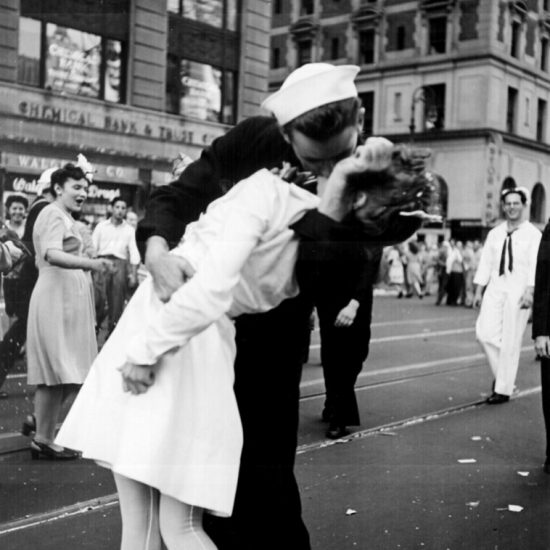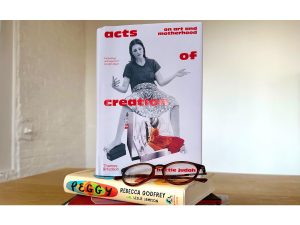The photograph of a sailor kissing a nurse in Times Square on V-J Day, August 14, 1945, is one of the most enduring images of World War II. Captured by Alfred Eisenstaedt for Life magazine, this spontaneous moment has transcended its original context to become a universal symbol of joy, relief, and the end of a devastating conflict. This article explores the story behind the iconic WWII kissing photo, its cultural impact, and the enduring mystery surrounding the identities of the couple.
1. The Story Behind the Iconic WWII Kissing Photo
On that fateful day in 1945, as news of Japan’s surrender spread across the United States, millions of people flooded the streets to celebrate the end of World War II. Amidst the jubilant throngs in Times Square, Alfred Eisenstaedt, a photographer for Life magazine, captured a moment that would be remembered forever. The iconic WWII kissing photo features a sailor in a white uniform embracing and kissing a nurse in a white dress, both lost in the ecstasy of victory. Eisenstaedt’s photograph, taken on the corner of 45th Street and Broadway, immortalizes a scene of spontaneous celebration.
The background, filled with joyous crowds and the American flag, adds to the emotional intensity of the moment. Eisenstaedt’s skillful composition and timing created an image that resonates with universal themes of love, peace, and human connection. Despite its simplicity, the photograph’s power lies in its ability to evoke deep emotions and memories of a time when the world was finally turning away from the horrors of war.
2. The Enduring Symbolism of the Kissing Photo
Since its publication, the iconic WWII kissing photo has come to symbolize the overwhelming relief and elation felt by millions as the war came to an end. The image’s simplicity and raw emotion have ensured its place among the most recognizable war images. It transcends its historical context, becoming a symbol of peace and human unity. The sailor, later identified as George Mendonsa, and the nurse, Greta Zimmer Friedman, have become central figures in countless articles, documentaries, and tributes dedicated to WWII’s legacy.
Over the decades, the photograph has been the subject of numerous interpretations and analyses. People have debated everything from the ethics of public displays of affection in wartime to what the image says about the American spirit. Of course, there are many other controversial and weird photographs that have sparked similar debates over the years. But no matter the angle, the iconic photograph’s core message stays the same: a powerful portrayal of joy and hope at the dawn of a new era.
3. The Mysteries Behind the Kissing Couple
For many years, the identities of the sailor and the nurse remained a mystery, sparking endless speculation. It wasn’t until 1980 that Greta Zimmer Friedman, the nurse in the iconic WWII kissing photo, was publicly identified. George Mendonsa, the sailor, was identified shortly after. The couple’s story, which began with a brief, impromptu kiss, continued to intrigue both historians and the public. Both individuals shared their experiences, adding layers of personal history to the iconic image.
In the years following the photograph’s release, Mendonsa and Friedman faced curiosity and media attention. Their recounting of the story provided a glimpse into how a single, unexpected moment of affection captured the emotions of an entire generation.
4. Cultural Impact and Legacy
The impact of the iconic WWII kissing photo on American culture and beyond is huge. It has been referenced in films, books, and artwork, becoming a symbol of the enduring human spirit. The image of a sailor and a nurse kissing has been widely reproduced, parodied, and memorialized. Its place in popular culture is solid, representing a moment of pure, unfiltered joy that continues to resonate with people across the world.
The photograph has inspired countless works of art, from paintings and sculptures to digital media. It has been featured in exhibitions and museums dedicated to the history of World War II, further cementing its status as a historical artifact and cultural icon. Its ability to evoke a strong emotional response is a big reason why it remains one of the most recognizable and cherished photographs in history.
5. Reflecting on the Legacy of the Iconic WWII Kissing Photo
As we look back on the iconic WWII kissing photo, it serves as a reminder of the end of World War II and the power of love and human connection. The photograph continues to inspire and move people, reminding us of the joy and compassion that can exist even in difficult times. It challenges us to remember the past while celebrating the resilience and hope that define the human experience.
In conclusion, the iconic WWII kissing photo stands as a lasting symbol of peace and unity. Its legacy continues to shape how we remember and interpret the past, serving as a reminder of humanity’s triumph over the darkness of war. As long as the image continues to be shared and celebrated, its story will live on, touching the hearts of future generations.
References and Sources
- Eisenstaedt, A. (1945). “V-J Day in Times Square.” Life Magazine.
- Friedman, G. Z., & Mendonsa, G. (1980). Interviewed by The New York Times.
- “The Kiss: The Story of the Photo that Ended World War II.” Smithsonian Magazine.
- “World War II in Pictures: The Iconic Kissing Photo.” History.com.




